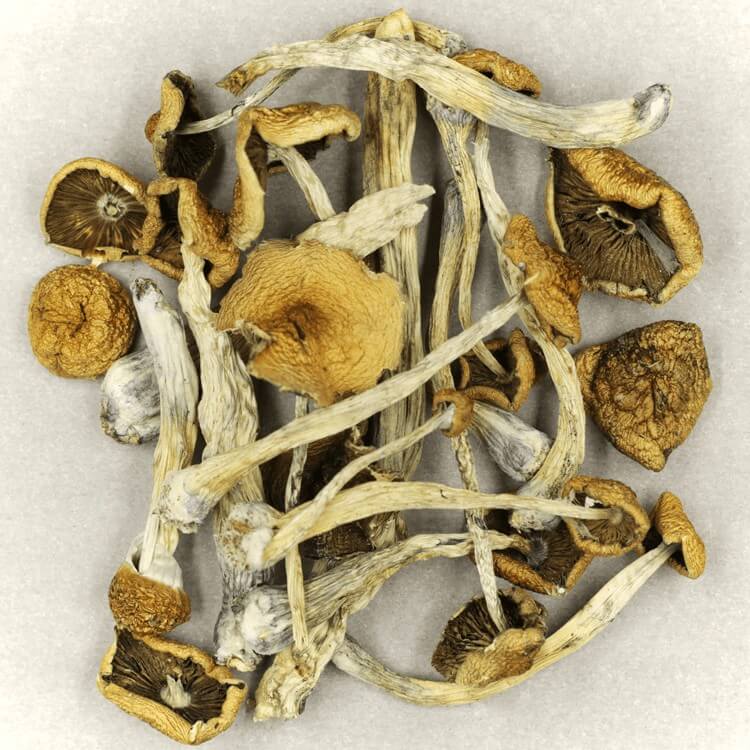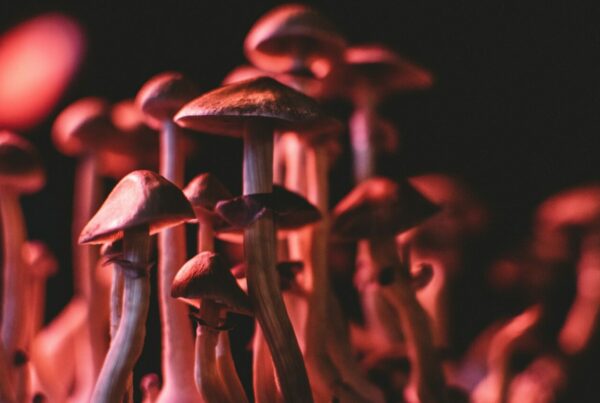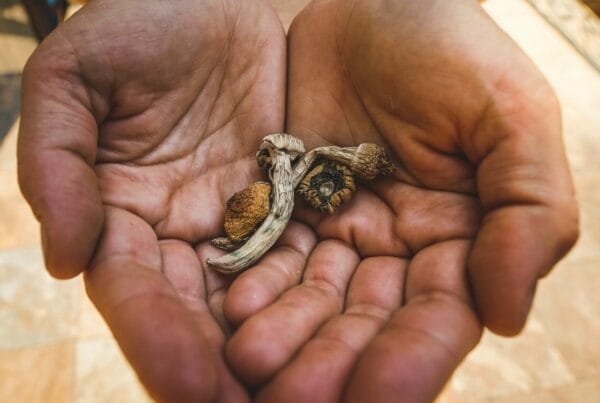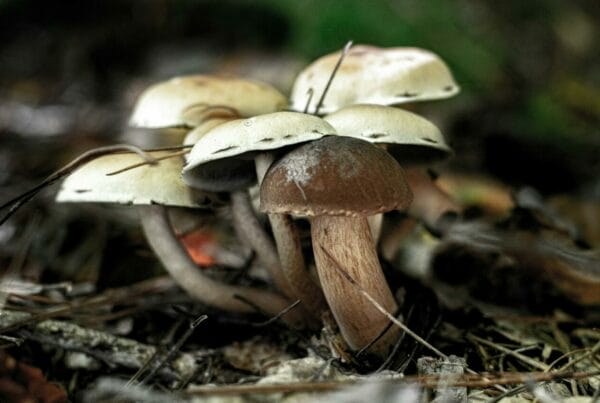Once deemed as mere fantasy, the power of Psilocybe mexicana is now gaining recognition due to ongoing psilocybin investigations. Steady findings about its healing properties by the psychedelic research community are gradually paving the way for its approval in the medical sphere. Experts see potential in this expanding field and persistently aim to determine safe dosage levels for medicinal applications.
Key Takeaways
- Researchers have adopted innovative techniques such as liquid chromatography coupled with tandem mass spectrometry to measure mushroom potency.
- Clinical trials are examining Psilocybe Mexicana, among other mushroom species, to evaluate their potential therapeutic benefits.
- The genetic variety in magic mushrooms is crucial for creating an accurate dosage plan.
Psychedelic Mushrooms: Emerging from the Shadows to Research Triumphs
In the past, only a few conditions were known to respond positively to Psilocybe Cubensis. But presently, Psilocybin is making impressive progress in uncovering its concealed medicinal qualities.
Specialists are leveraging the potential of Psilocybe Mexicana and other potent strains for in-depth research and clinical trials. Whether the studies are in vivo or in vitro, this strain effectively displays the most genuine effects and benefits of the fungus species.
Psychedelics Paving Their Way into the Market
No longer concealed but revealed—continuous breakthroughs and findings are progressively capturing public attention, particularly those in search of therapeutic resolutions. Conventional treatments for mental health disorders often fall short, driving individuals to look for more effective alternatives.
Enter the realm of magic mushrooms.
Patients with mental health disorders are resorting to psilocybin, which demonstrates potential in treating depression, alcohol addiction, anxiety, compulsions, tics, chronic pain, among others.
Currently, medical practitioners are exploring novel methods to determine the ideal dosage for secure patient administration. Remarkably, a group of researchers from the University of Texas has designed a model to extract psilocybin and psilocin concentrations.
The potency of magic mushrooms can be clinically established.
Mexicana’s Distinct Features
The Golden Teachers, Blue Meanies, and B-Plus mushroom strains have undergone considerable research. To further our knowledge of safe magic mushroom use, explorations into additional species are necessary.
The Mexicana species is garnering attention in the research community, not solely because it’s among the oldest known species, but also due to its relatively modest potency, which is more likely to fall within medical drug guidelines.
Despite having a less potent effect than other species, the Mexican strain can produce similar outcomes as more prevalent strains. As microdosing gains traction among patients, this strain emerges as an optimal choice.
This strain boasts steady levels of psilocybin and psilocin, much like other strains. Why then should one opt for this strain over others? The answer lies in its historical and anthropological significance.
Delving into a Rich “Mexican” Heritage
The psilocybe mexicana naturally thrived in moss in ancient times. These psilocybin mushrooms were held in high esteem by Indigenous people, often used in conjunction with mystical or otherworldly occurrences.
Let’s focus on Mexican mushrooms. The first documented usage of these mushrooms by the inhabitants of North and Central America dates back more than 2000 years. The Aztecs, an ancient cultural group, referred to these mushrooms as the “food of the Gods,” or “teonanácatl” in their native language.
If the Aztecs were present today, they would attest to the transformative, emotionally potent, and mentally stabilizing effects of the Mexicana—despite the lack of familiarity with these modern terms.
Despite various cultivation techniques, this mushroom has preserved its natural psilocybin concentrations, underscoring its authenticity. Researchers and psychedelic research institutions highly regard this authenticity as an accepted standard.
Innovative Methods for Psilocybin Content and Potency Assessment
A team of ten researchers from the University of Texas at Arlington and other research institutions devised a novel method to test the potency of psychoactive compounds in mushrooms. This innovative measurement approach integrates liquid chromatography and tandem mass spectrometry.
Here are two groundbreaking techniques:
- Liquid chromatography is a technique that analyzes and separates the active chemical compounds in mixtures, in this context, specifically in mushrooms. The procedure entails passing a liquid sample through a column packed with a solid substance or the stationary phase. The different chemicals in the sample interact with the stationary and mobile phases in unique ways. This interaction results in their separation at varying rates as they traverse through the column.
- Spectrometry typically investigates the interaction of matter with electromagnetic radiation across a wide range of wavelengths. It detects and quantifies substances according to the specific wavelengths of light that molecules absorb and disperse. This process enables determining the chemical’s electronic, vibrational, and rotational states.
This methodology was employed on five strains of magic mushrooms. The scientists found that the average combined levels of psilocybin and psilocin across these strains varied from 0.879 to 1.36. These concentrations exceeded those found in many other strains, such as Bull Run and Cambodian. They confirmed the precision of their study by comparing their findings with data from other independent laboratories.
The concurrence of results between the two laboratories further substantiates the reliability of their testing procedure in accurately determining the potency of the mushrooms.
If this approach is confirmed by experts, it could add to the existing methods of psychedelic potency testing, thus serving as an extra safety precaution against unsafe dosage determinations.
Extending Research to Additional Species
Widening the scope of research to include other species is advantageous. It could deepen our understanding of the health benefits linked with different strains and provide baseline data on the effects of less potent mushrooms.
Furthermore, this could assist in educating individuals about the impact of various dosages on the psychedelic experience. Researchers can determine how different concentrations of active compounds can affect therapeutic results by comparing strains like Mexicans with more potent strains such as Psilocybe Cubensis.
For example, the Blue Meanies strain results in stronger hallucinogenic effects, which could be potentially useful in treating conditions like depression. On the other hand, strains with lower doses could be more suitable for microdosing or subtle applications like mood enhancement or focus improvement.
Genetic Diversity Leads to Safer Treatments
The less known fact is that various cultivars or varieties have distinct genetic profiles and
It’s vital to understand that hallucinogenic mushrooms vary in terms of their strength, chemical composition, and effects. This diversity allows medical experts to pick the most suitable variety for specific medical purposes and adjust dosages according to individual requirements, thereby reducing risks and maximizing benefits.
Take into account, for instance, Psilocybe Semilanceata (Liberty Caps) or Psilocybe cyanescens, both have distinctive alkaloid profiles that could be beneficial in managing anxiety. On the other hand, synthetically cultivated mushrooms might be a better choice for addressing substance abuse or compulsive behaviors. This assortment supports the development of customized treatments that offer enhanced safety and effectiveness.
From this, we can infer that the genetic diversity in hallucinogenic mushrooms, coupled with advanced techniques of strength assessment and identification, is critical for the creation of safer medical treatments.
Enhanced Safety in Medical Applications
Let’s take some time to contemplate the significance of safer dosing.
- Lower risk of overdose: Accurate dosing eliminates concerns about overdosing. This also suggests that product labels should be clearer to avoid consumer misunderstanding.
- Better predictability: With precise dosing, people can anticipate the effects or experiences they may encounter during their trips. This can alleviate overwhelming sensations and anxiety, thereby enhancing patient satisfaction.
- Uniform measurement: In essence, dosing accuracy fosters a standardized metric, enabling people to conveniently refer to charts for potential effects.
Experience the Advantage of Accurate-dosed Shrooms with Advanced Potency Tests | Buy Magic Mushrooms Online at Mushroom Canada
If these two pioneering methods continue to evolve, you’ll no longer encounter unexpected effects. Couple this with smart online shopping at Mushroom Canada. We offer dried mushrooms that promise a tranquil, soothing psychedelic journey without excessive psychoactivity. Buy psychedelics online in Canada via Mushroom Canada.
Frequently Asked Questions
Do Mexico Psilocybe Mexicana and the Big Are Big Mexicans and Psilocybe Cubensis identical?
No, Big Mexicans and Psilocybe Cubensis are distinct mushroom strains, so it’s crucial not to confuse them. Big Mexicans have a higher compound isolation, ranging from 0.5% to 1%, making them significantly more potent
Psilocybe Cubensis and Psilocybe Mexicana have different potency levels, with the latter being typically less potent. Their appearance also varies; Psilocybe Mexicana often exhibits a bell-shaped cap, in contrast to the conical cap of Psilocybe Cubensis.
What potency do Mexican mushrooms have?
The concentrations of psilocybin and psilocin in Mexican mushrooms can peak at 0.25%. Although these levels align with those found in the Golden Teacher strain and are relatively low, they can still induce profound psychedelic experiences that may have health benefits.
What is the safe dosage for medicinal use?
The typical recommended dosage is between 1 and 2 grams, but this can fluctuate depending on factors such as the method of consumption, the individual’s metabolism, and the specific potency of the mushroom strain. Some individuals prefer to consume sub-threshold doses ranging between 0.05 (50mg) and 0.025 grams (250mg) to minimize the psychedelic effects.





